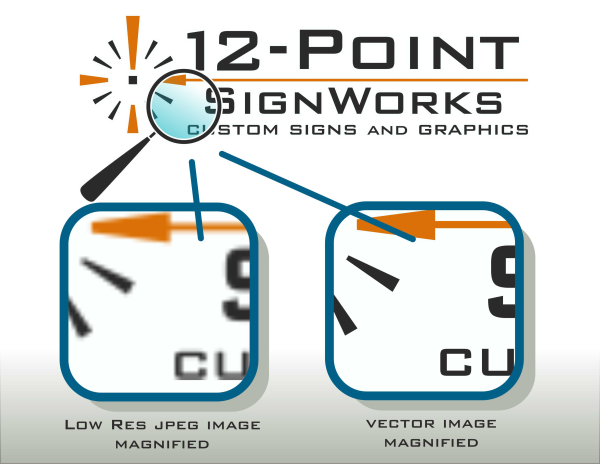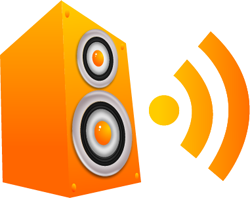Vehicle wraps, commercial signage, and digital printing are key components of our products and services and are driven by artwork and graphic design. What sets many companies apart is the quality of work or services they provide. Having very talented designers on our team is extremely advantageous to the smooth operation of our company and the transition of design to production. Designing for large format printing, is very different from designing and preparing files for web or smaller format printing as in magazines, web sites, and small promotional materials such as business cards, and mailers. The approach is the same, but the file setup and final file resolution and format are slightly different. Below is a logo we designed to be used in many formats; not just small format, but large format printing:

Having the knowledge to apply market-trending graphic design to the large format scale printing industry is an imperative skill to have in order to maximize quality when digitally printing for vehicle wraps, signs, banners, etc. The process starts with the file setup - using the right settings and programs to create these designs and artwork from the beginning. Knowing the difference between raster and vector artwork for custom signs will help you in formulating and sourcing the right elements and media to be used in creating your large format printing projects. We often get artwork from clients who have created it themselves or paid someone to create a design for print. We always hope to find vector artwork and/or Photoshop print files set up at 300dpi to scale (dpi-dots per sq. inch - refer to the above article) but sometimes, we are required to recreate the artwork, which is an unfortunate additional cost for the client. Make sure you consult your designer and let them know you have plans to use their supplied artwork for larger formats other than web and small format printing.

Design today uses a healthy mixture of vector artwork, which is created in programs such as Adobe Illustrator or CorelDraw, and raster artwork, which is usually created in Adobe Photoshop. Each program has its own limitations, but combining the two can create some excellent visually stimulating, and vibrant designs. In the case of vehicle wrap design, the designer creating the artwork has to design in almost a 3-dimensional way. Knowing how the panels will fall on a curved surface and knowing where they will wrap over to other sides is crucial to making the wrap look well put together when installed. This will help for proper logo and information placement, and can help optimize your useable space. Feel free to contact 12-Point SignWorks with questions or a free estimate on your design work for future projects.




